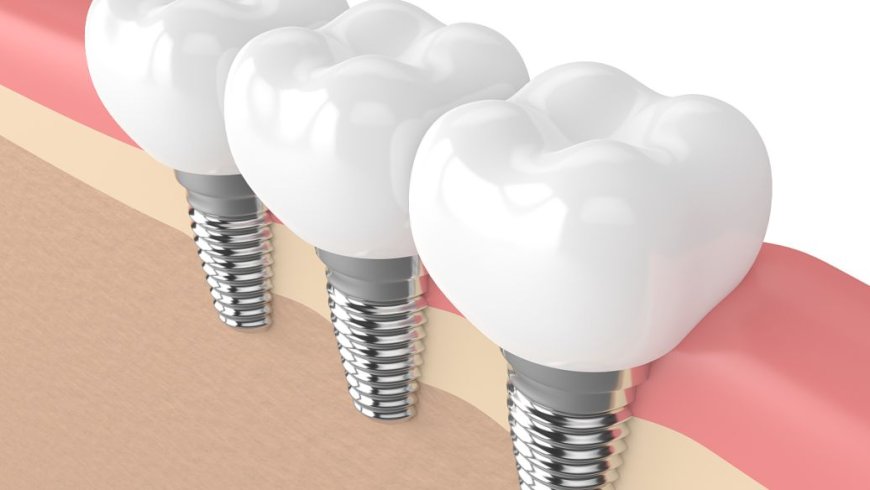Dental Implants: What and How
Dental implants, also known as implant-supported dentures, are bio-material-based prosthetic teeth, divided into two parts: the implant that is embedded into the jawbone to provide support and the crown that handles chewing functions. The process begins with a dentist selecting an appropriately shaped implant to insert into the jawbone, serving as an artificial tooth root, followed by mounting a crown on the exposed part to mimic the shape and function of a natural tooth.

WHAT IS DENTAL IMPLANTS
-
Dental implants, also known as implant-supported dentures, are bio-material-based prosthetic teeth, divided into two parts: the implant that is embedded into the jawbone to provide support and the crown that handles chewing functions. The process begins with a dentist selecting an appropriately shaped implant to insert into the jawbone, serving as an artificial tooth root, followed by mounting a crown on the exposed part to mimic the shape and function of a natural tooth.
-
Compared to traditional dentures, dental implants offer several significant advantages. Their chewing function is vastly superior, providing strong fixation and stability. They can anchor firmly in the patient's mouth like real teeth, helping to preserve bone mass. Unlike removable dentures, they do not require the grinding down of adjacent natural teeth.
-
Dental implants also eliminate the need for the clasps and metal frameworks that are essential in removable dentures. This absence of extensive plastic bases reduces issues of taste impairment and discomfort. Their smaller size, comfort, and aesthetic appeal promote oral hygiene. Research shows that the success rate of dental implants exceeds 90% over five years.
HOW TO PERFORM DENTAL IMPLANTS?
-
The dental implant procedure typically includes an oral examination, surgical anesthesia, implantation of the artificial tooth root, a bone integration period, and crown restoration. The initial step is an oral examination where the dentist assesses the condition of teeth, gums, and bone density to determine the patient's suitability for the procedure.
-
Before surgery, local anesthesia is administered to ensure a pain-free experience for the patient. The dentist then creates a small hole in the jawbone to insert the artificial tooth root, usually made of titanium alloy. After implantation, the surgical site is sutured.
-
Following the implantation, patients undergo a waiting period for bone integration. This phase allows the implant to bond with the jawbone tissue, ensuring the artificial root is securely fused into the bone, forming a stable foundation.
-
After the bone integration period, the dentist attaches a crown to the dental implant. The material for the crown is chosen based on the patient's specific needs and aesthetic preferences.
-
It's crucial for patients to undergo dental implant procedures at reputable medical institutions to ensure the effectiveness of the implants. Post-implantation, maintaining oral hygiene is essential. Patients should brush regularly and avoid consuming highly spicy or irritating foods like chili, mustard, and onions in the short term to prevent infection.
In conclusion, dental implants represent a significant advancement in dental prosthetics. Offering a range of benefits over traditional dentures, they provide a more natural, comfortable, and functional solution for tooth replacement. With proper care, dental implants can effectively restore the aesthetics and functionality of a patient's smile.
What's Your Reaction?




























:quality(85):upscale()/2024/01/25/878/n/1922153/f94f61ec65b2bf18018990.47538761_.jpg)

:quality(85):upscale()/2024/01/26/751/n/1922153/6bd241b765b3e57a0c5559.91495665_.png)
:quality(85):upscale()/2024/01/26/759/n/29590734/b7f6660b65b3e8460d7196.77057039_.jpg)













